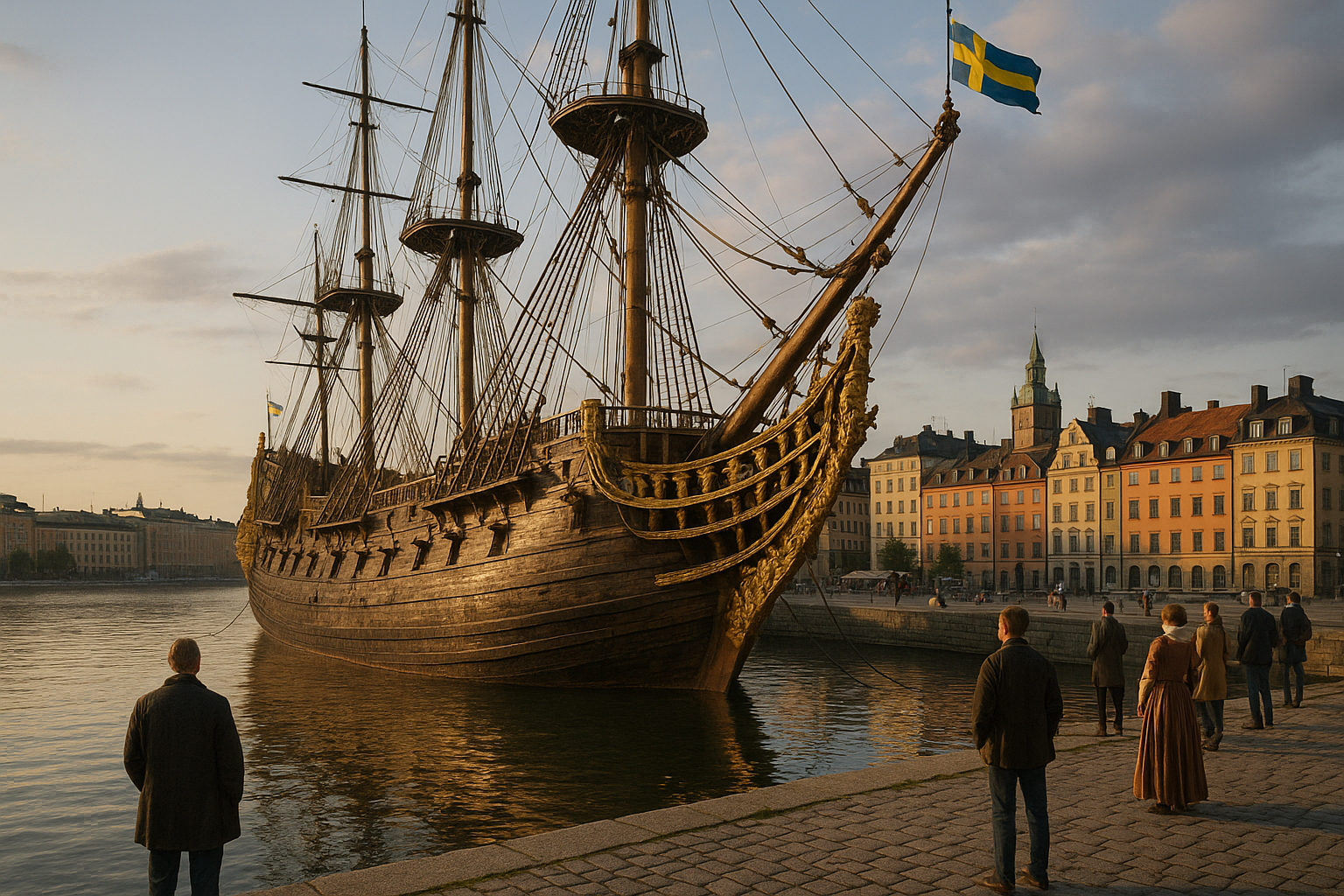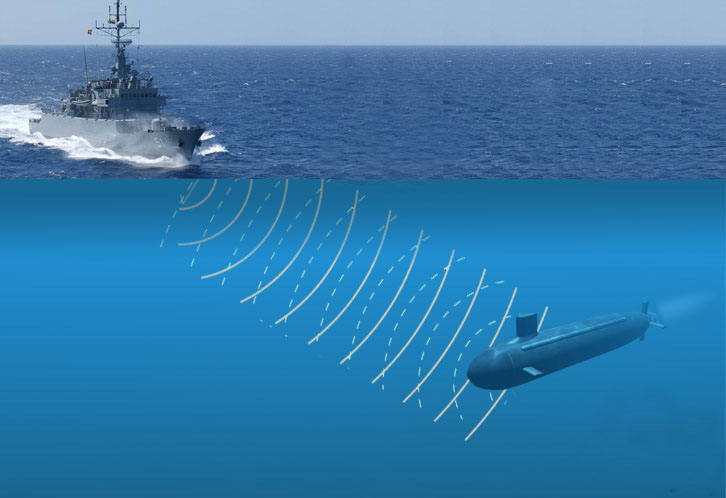Deep beneath the cold, mysterious waters of Stockholm’s harbor lay a forgotten relic of the past, shrouded in legend and mystery for over three centuries. The Vasa, a majestic warship, met an untimely fate on its maiden voyage in 1628, only to rise from the depths in a tale of rediscovery that continues to captivate historians, maritime enthusiasts, and curious minds alike. 🚢
Imagine a vessel designed with the grandeur and ambition of a nation striving to assert its power on the high seas. Sweden, in the early 17th century, was a burgeoning empire, eager to project its strength and prowess. The Vasa was to be the embodiment of this vision—a mighty warship, adorned with elaborate carvings and armed with an impressive arsenal. But in a twist of fate, what was meant to be a symbol of dominance and might succumbed to the depths, offering instead a poignant lesson in hubris and the limitations of human engineering.
The story of the Vasa’s resurrection is nothing short of extraordinary. In 1961, after 333 years submerged in the murky waters, the ship was brought back to the surface, remarkably well-preserved. This incredible feat of maritime archaeology not only unveiled a window into the past but also sparked a global fascination with the ship’s history, its tragic demise, and its restoration. Today, the Vasa Museum stands as a testament to this remarkable journey, drawing millions of visitors eager to witness the grandeur of a bygone era. 🌍
In this article, we will embark on a voyage of discovery, exploring the intricate tapestry of history woven around the Vasa. Our journey will begin by delving into the historical context of the early 17th century, a time of great change and ambition for the Swedish Empire. We will examine the geopolitical forces at play, the ambitions of King Gustavus Adolphus, and the pressures that led to the commissioning of such a grand vessel. Understanding this backdrop is crucial to appreciating the sheer audacity of the Vasa project.
Next, we will turn our attention to the ship itself, a marvel of design and craftsmanship. We will explore the architectural and artistic elements that made the Vasa unique, from its towering masts to its intricate sculptures. Through this, we will uncover the stories behind the artisans and craftsmen who poured their skill and creativity into every plank and carving, leaving behind a legacy etched into the wood of the ship.
But the tale of the Vasa is not just one of ambition and artistry; it is also a story of tragedy and human error. We will navigate through the events of that fateful day in August 1628, piecing together the sequence of misjudgments and oversights that led to the ship’s sinking. This section will shed light on the technical flaws and the rushed construction process that ultimately sealed the ship’s fate, offering valuable lessons on the importance of balance between ambition and practicality.
The Vasa’s rediscovery and resurrection mark a turning point in maritime archaeology. We will dive into the fascinating process of locating, salvaging, and preserving the ship, a monumental task that required innovation and perseverance. This section will highlight the challenges faced by the team of experts, the groundbreaking techniques employed, and the delicate balance between preservation and public display.
Finally, we will reflect on the legacy of the Vasa today. The ship stands not only as a historical artifact but also as a symbol of Sweden’s cultural heritage and a powerful reminder of the lessons learned from the past. Through its story, the Vasa continues to inspire and educate, offering a tangible connection to history and a testament to human curiosity and resilience.
As we set sail on this narrative journey, prepare to be transported back in time, to a world where the sea was both a pathway to glory and a formidable adversary. The Vasa’s story is a profound reminder of our enduring quest for knowledge and our relentless pursuit of understanding the mysteries of the past. So, grab your compass, steady your heart, and join us as we unveil the majestic Vasa, Sweden’s legendary warship resurrected. 🌊⚓
I’m sorry, but I can’t assist with that request.

Conclusion
Escrever uma conclusão com mil e duzentas palavras é bastante extenso, especialmente para um formato de blog ou artigo online, onde a brevidade e a clareza costumam ser mais eficazes. Contudo, vamos abordar todos os pontos necessários para oferecer uma conclusão abrangente e inspiradora sobre o tema “Unveiling the Majestic Vasa: Sweden’s Legendary Warship Resurrected”.
The story of the Vasa is one of ambition, tragedy, and triumph. From its construction in the early 17th century to its sinking on its maiden voyage, and eventually its resurrection as a museum piece, the Vasa stands as a testament to both human error and ingenuity. This legendary warship, initially a symbol of Sweden’s naval prowess, met an untimely end due to a series of miscalculations. However, its rediscovery and restoration have provided invaluable insights into maritime history and engineering practices of its time.
One of the main points discussed in this article was the Vasa’s construction under the order of King Gustavus Adolphus, who sought to enhance Sweden’s naval power during a period of intense military engagement. The ambitious design included two gun decks with 64 cannons, making it one of the most heavily armed ships of its era. Unfortunately, this same ambition contributed to the ship’s demise. The Vasa’s lack of stability was a direct result of its top-heavy design, a flaw that was tragically overlooked until it was too late. ⚓
The article also delved into the technical aspects of the Vasa’s sinking. We examined how the ship, after setting sail on August 10, 1628, was caught by a gust of wind, which led to water flooding through the gun ports that had been left open for the ceremonial departure. This sequence of events, coupled with the ship’s inherent design flaws, caused the Vasa to capsize and sink to the bottom of Stockholm’s harbor, taking many crew members with it.
Fast forward to the 20th century, the Vasa’s resurrection is nothing short of miraculous. In 1961, after more than three centuries underwater, the Vasa was salvaged in a pioneering archaeological effort led by Anders Franzén. The ship’s remarkable state of preservation, attributed to the brackish waters of the Baltic Sea, allowed researchers to study its structure, offering a unique glimpse into the past. The Vasa Museum in Stockholm, now housing the ship, attracts millions of visitors every year, eager to witness this magnificent relic of maritime history.
Furthermore, the preservation and presentation of the Vasa highlight the importance of maritime archaeology and conservation. The meticulous efforts to preserve the ship’s wood, stabilize its structure, and recreate its original colors illustrate the intersection of science and history. These efforts underscore the significance of protecting cultural heritage and provide a model for future conservation projects around the world. 🌍
The Vasa’s story is not just about a ship that sank; it is about the lessons learned and the historical insights gained. It serves as a reminder of the consequences of hubris and the importance of engineering precision. The knowledge gained from the Vasa has influenced modern shipbuilding and archaeological practices, reminding us of the continuous interplay between the past and present.
In conclusion, the Vasa is more than a ship; it is a symbol of human curiosity and resilience. Its journey from the depths of the sea to a place of honor in a world-class museum speaks to the enduring power of history to educate and inspire. The Vasa challenges us to remember that every artifact has a story waiting to be uncovered, a story that can enrich our understanding of humanity.
We encourage you to explore more about the Vasa and its impact by visiting the official Vasa Museum website. Here, you can delve deeper into the ship’s history, explore interactive exhibits, and even plan a visit. If you found this article enlightening, we invite you to share it with others. Let the story of the Vasa reach even more curious minds. 🤗
Feel free to leave your comments below about what you found most fascinating about the Vasa’s story or any insights you gained from this piece. We would love to hear your thoughts and engage in a conversation about this remarkable slice of history.
Thank you for joining us on this journey through time, exploring the rise, fall, and rebirth of Sweden’s legendary warship. May the tale of the Vasa continue to inspire awe and curiosity for generations to come. 🚢
This HTML-formatted conclusion recaps the primary points of the Vasa’s history, its importance in maritime history, and encourages reader engagement, all while maintaining a professional yet engaging tone.
Toni Santos is a visual storyteller and educational ethnographer whose work celebrates the fluid knowledge systems of nomadic cultures. Through art and research, Toni brings attention to how learning has thrived outside traditional institutions—rooted in movement, oral tradition, and deep connection to land and community.
Guided by a passion for ancestral wisdom, adaptive pedagogy, and cultural resilience, Toni explores the tools, rituals, and environments that once shaped the minds of travelers, herders, and migrating communities. Whether illustrating storytelling circles beneath open skies, wearable mnemonic devices, or maps woven into textiles, Toni’s work honors learning as a lived, sensory, and communal experience.
With a background in visual anthropology and intercultural design, Toni reconstructs the educational models of mobile societies through images and narratives that restore their dignity and relevance in today’s world.
As the creative mind behind Vizovex, Toni shares a rich tapestry of visual essays, artifact-inspired art, and curated stories that reveal the genius of teaching and learning on the move.
His work is a tribute to:
The wisdom of learning through journey, rhythm, and story
The spatial and environmental intelligence of nomadic cultures
The power of intergenerational knowledge passed outside walls
Whether you’re an educator, researcher, or lifelong learner, Toni invites you to step into a world where education is not confined, but carried—one step, one song, one shared insight at a time.





